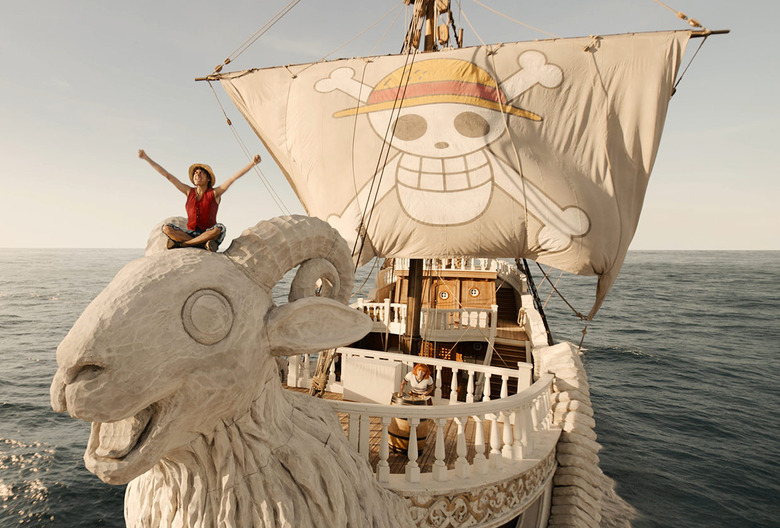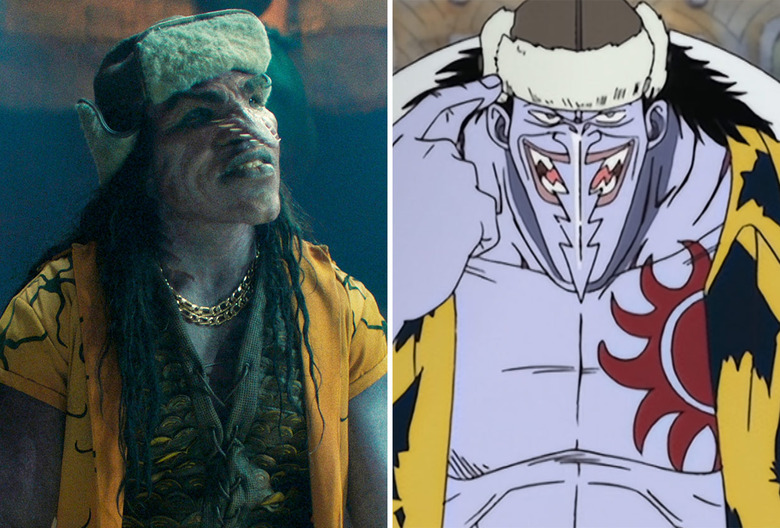One Piece EP Explains The Live-Action Netflix Series' Biggest Page-To-Screen Changes, Including The Season's Big Bad
For the team behind Netflix's live-action One Piece, the process of bringing Eiichiro Oda's beloved manga to life was as arduous a process as the Straw Hat Pirates' journey to the Grand Line.
"It's definitely the biggest undertaking I've ever been involved with in television," co-showrunner Steven Maeda tells TVLine of the show's eight-episode first season, now streaming. "We're very fortunate to have had the support to make this version of the show, and also a very healthy budget to be able to pull it all off."
The high-sea adventures of Monkey D. Luffy, who aspires to become King of the Pirates by discovering the show's titular treasure, have been regularly published since 1997, giving the Netflix team plenty of material from which to mine. Perhaps too much material, even?
"The choice was made to keep [this season] under the first 100 chapters because it's so big, it's so sprawling," Maeda explains. "There are so many different directions to go in, and none of the sets ever really repeat, which makes it a huge production challenge because they're going to new places every one or two episodes. I think [the manga] is at 1,089 chapters now and it isn't finished yet."
As with anything being adapted from one medium to another, certain changes were made in bringing Oda's story from page to screen, particularly in terms of story structure. Essentially, the challenge was to make sure it was a "digestible season of television for eight episodes" (aka the type of show Netflix viewers have come to expect) while also staying true to the manga and appeasing passionate fans.
In Maeda's mind, the biggest change was "ramping up" the Marines' pursuit of the show's pirate crew early in the season, something that doesn't pick up speed until later in the manga. For those familiar with the source material, it was the show's way of working the villainous Vice Admiral Garp into the story much sooner and establishing Koby as a "counterpoint" to Luffy, with the unlikely friends working to become a renowned Marine and pirate respectively.
Fans of the manga can also expect to see more of the ruthless Arlong in these first eight episodes. Without having the terrifying fishman around as a Big Bad of sorts, the season is "just a series of wonderful, inventive, unique locations and antagonists," Maeda says. "That wouldn't hold the eight episodes together. There had to be a sense that there was a villain who was kind of the main thrust of the first season."
Structural changes aside, fans of One Piece can look forward to a faithful adaptation of the global phenomenon, with no expenses spared in the painstaking recreation of the East Blue. Our only word of advice? Treat it like a meal at the Baratie (if you know, you know) and savor the experience, as it could be years before we get to reunite with Luffy and his crew for a potential second season.
Once you've checked out Netflix's live-action One Piece for yourself, grade the premiere in our poll below and drop a comment with your thoughts. Did it do the manga justice?

